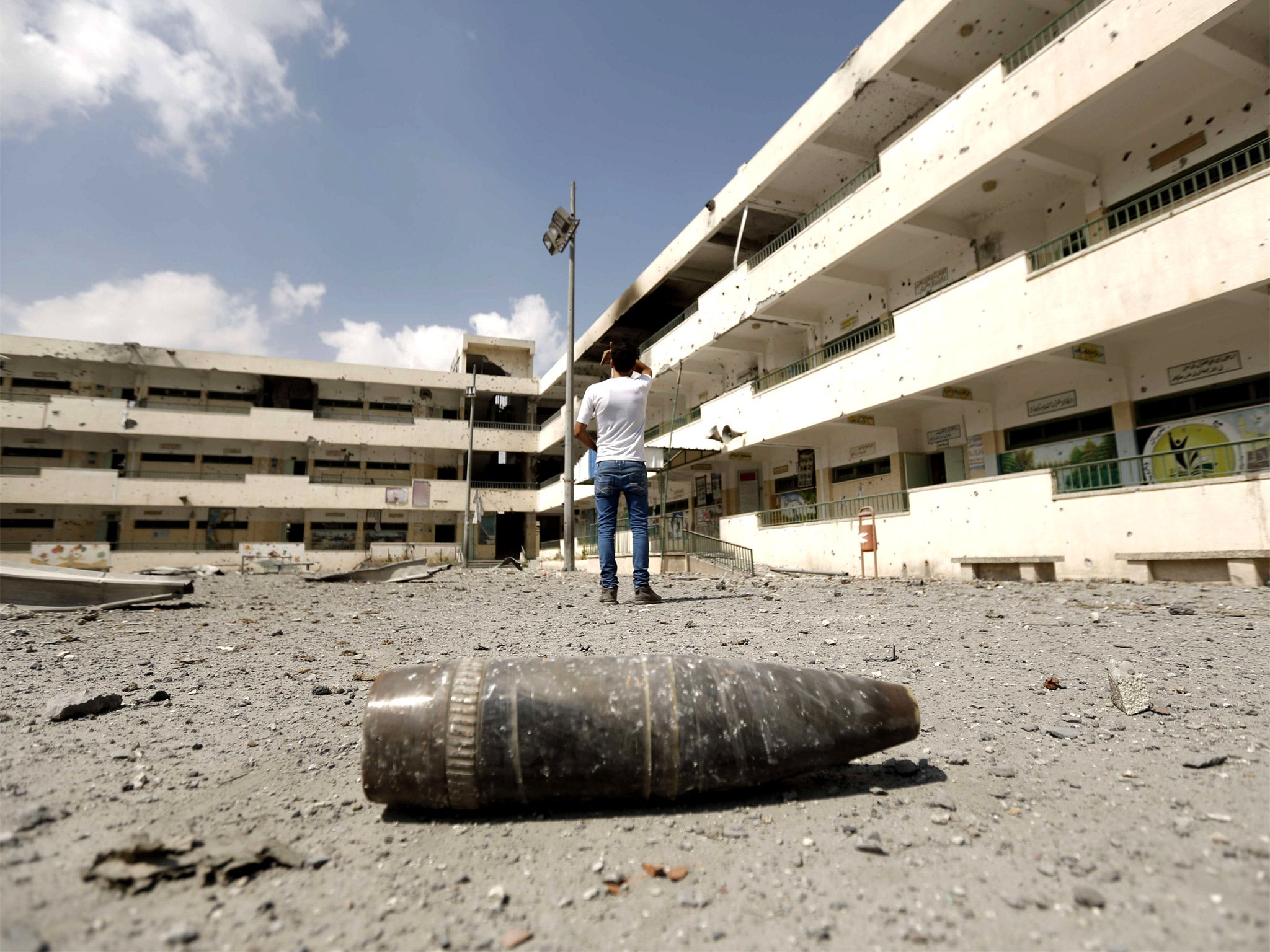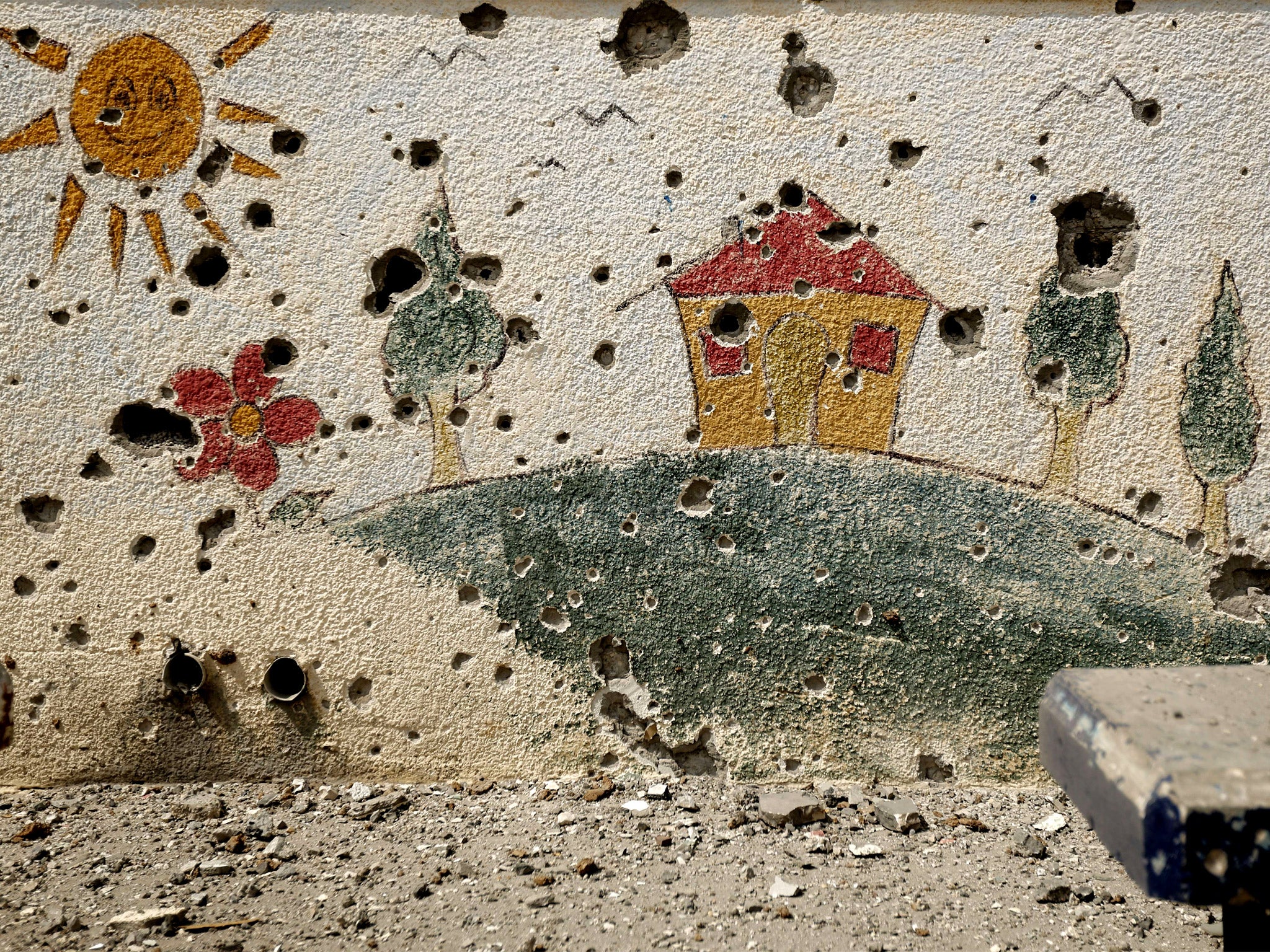Gaza conflict: Withdrawal of Israeli soldiers reveals the shell-strewn detritus of humanity
Villagers return to their homes, mourning dead loved-ones and trying to regain normality

The remnants of the Israeli forces’ occupation of the building during some of the fiercest fighting of the month long war – half-empty cans of food, bread, the wrapping of a toothpaste tube, a Star of David scrawled on the wall – were still evident as Tamer Abu Rujeila told the story of the breakout from Khuza’a.
This large outlying village east of Khan Yunis and close to the Israeli border was unreachable even for the Red Cross recovering dead bodies, until Israel forces began their weekend pullback. It may be weeks before the full details of what happened here in the last 10 days of July emerge.
But even by the standards of other destruction in Gaza, the sight of the razed houses and mosques at the entrance to the village – and deeper inside it – takes the breath away.
In the area occupied by the Abu Rujeila clan, 14 of its members were killed when air strikes destroyed at least four residential buildings.
Among the dead were Tamer’s uncle Hilmi – whose body has still not been found – and his 21-year-old son and 27-year-old daughter. In what is normally the local children’s psychiatric support centre – a large firing hole in one wall – Tamer, 38, a local businessman, described how after Israeli tanks entered the area on 22 July, 50 extended family members sheltered in the building – damaged but still standing – he occupied with his wife, Maysaa, and their four children.
Even when the attacks became more intense two days later and the group moved to a neighbouring building, Tamer says he didn’t want to leave despite Red Cross advice to do so.
“We thought if were going to die we should die here with dignity,” he said.
But the next day there was a major explosion which the family attribute to a large device, an elongated barrel apparently part of mine clearing equipment and still lying in the rubble, but which they remain convinced fell from the sky. Either way the windows of their building blew in and even Tamer was ready to leave.
Waving white flags, the now 85-strong group began their gingerly escape through a neighbourhood alive with gunfire. “There were 30 children and 25 women,” Tamer said. “The rest were men. We carried four old people on our shoulders. But some of the children were refusing to leave as they were so scared.”
Tamer’s son Ahmed, 8, injured by shrapnel in an earlier strike, told his father he would rather die at home. So with the tanks only metres away and struggling to keep together despite the shooting, the fathers held or dragged their unwilling children with them. At the now devastated entrance to Khuza’a, they assembled with almost 3,000 other locals for the journey to the relative safety of neighbouring Abasan. Tamer – who first returned to inspect his home on Tuesday – said that 35 of the 3000 were injured by shooting at some point on their journey. Before the Abu Rujeilas left for shelter in Khan Yunis, another uncle, Ismail, 52, was killed in an air strike on Abasan. The serious fighting in Khuza’a is not in doubt. On Sunday, against a background of shelling, a middle-aged resident told us his son had been killed taking part in a Hamas ambush on an Israeli armoured bulldozer. The battle must have spread to this area after the Abu Rujeilas left. Refusing to disavow the fighters, Tamer said: “We are all resistance.”
But Tamer was adamant that his extended family were civilians. Indeed he says that their IDs were checked by Israeli troops at the entrance to the village.
Elsewhere in Gaza, people took advantage of the calm to return to their devastated homes and inspect damages.

People trickled back, making their way over buckled roads, through dangling power lines and overturned trees to inspect their neighbourhoods.
Along the way, rows of flattened buildings alternated with moderately damaged structures – and rare buildings with no damage.
Cars and donkey carts loaded with household goods and mattresses filled the streets and queues formed at banks as people waited to withdraw cash from ATMs.
Utility companies worked frantically to repair downed electricity and telephone lines. Back in Khuza’a, neighbours brandished a casing of a tank shell marked clearly as Made in the USA, with its serial numbers intact. And a lone bulldozer sifted through the rubble looking for the remains of Hilmi Abu Rujeila.